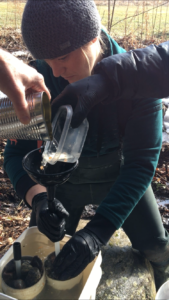Healing Our Headwaters
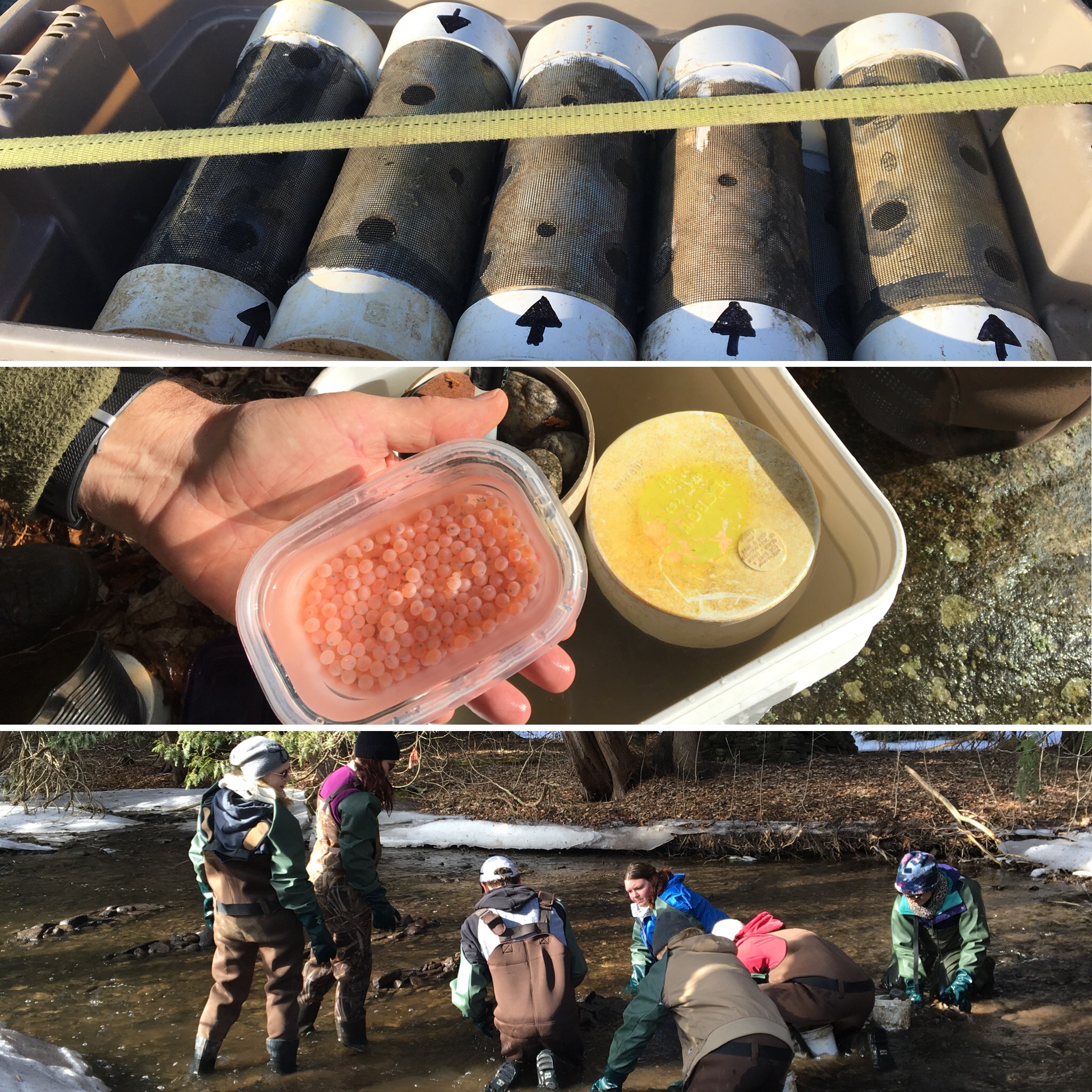
Atlantic Salmon has disappeared from Lake Ontario, and Ontario Streams is trying to re-establish them through restocking. As part of “Bring Back the Salmon”, Jennifer Valentine, Water Rangers’ Outreach Director, was lucky enough to be selected to help prepare artificial spawning habitats for some salmon eggs in the Humber River this January.
This is Jenn’s Story.
As a kid, water seemed to draw me in. I wasted hours wading around a stream searching for life. I spent my days turning over rocks, hunting for clams or crayfish. Even now, when I find living things in the water I can’t help but feel like a kid again! So when I was given the opportunity to volunteer for Ontario Streams stocking Atlantic Salmon eggs, of course I jumped at the chance.
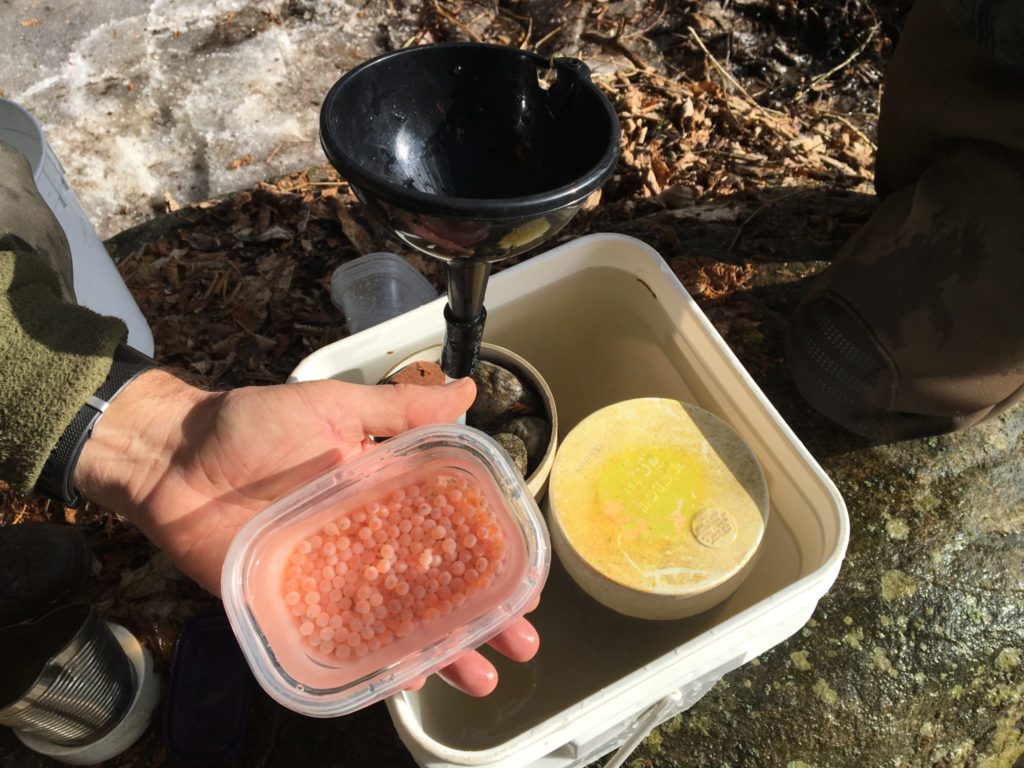
Atlantic Salmon Stocking with Ontario Streams
On Jan 28th 2018, a handful of volunteers were selected to help Ontario Streams install incubator tubes filled with Atlantic Salmon eggs at three locations along the Humber River.
Krystal Athanassiou, Program Biologist, led the day with the help of Warren Young, a long-time volunteer for Ontario Streams.
Other volunteers included Pete Davis, from Ontario Federation of Anglers and Hunters, Fish and Wildlife Technician students from Fleming College, and Water Rangers!
What we did
The incubator tubes protect the delicate salmon eggs so that more will hatch successfully. Forty-three incubator tubes were placed in the river, each containing 200 salmon eggs in the “eyed egg” stage of development.
The three stages of development are
- Green egg (within 48 hours of being spawned,
- Tender egg (between green and eyed egg), and
- Eyed egg (have visible eyes: between 6-12 weeks).
Our eggs were in the last phase, which is the last stage before they emerge from the egg sac.
This technique attempts to mimic the natural spawning process by creating artificial spawning beds that contain and protect eggs. Ontario Streams have been researching the effect of early introduction to the natural environment, and if this will imprint hatching locations on the next generation of freshwater salmon. They hope this leads to increased survival rates, and that the salmon will return to their spawning location.
What’s next
We’re so excited to see these hatchlings as they grow. In May, the tubes will be removed from the stream. The salmon will have developed into “fry”, which resemble tiny minnows. They’ll be very hungry and ready to start their lives in the river. Eventually they will swim to Lake Ontario.
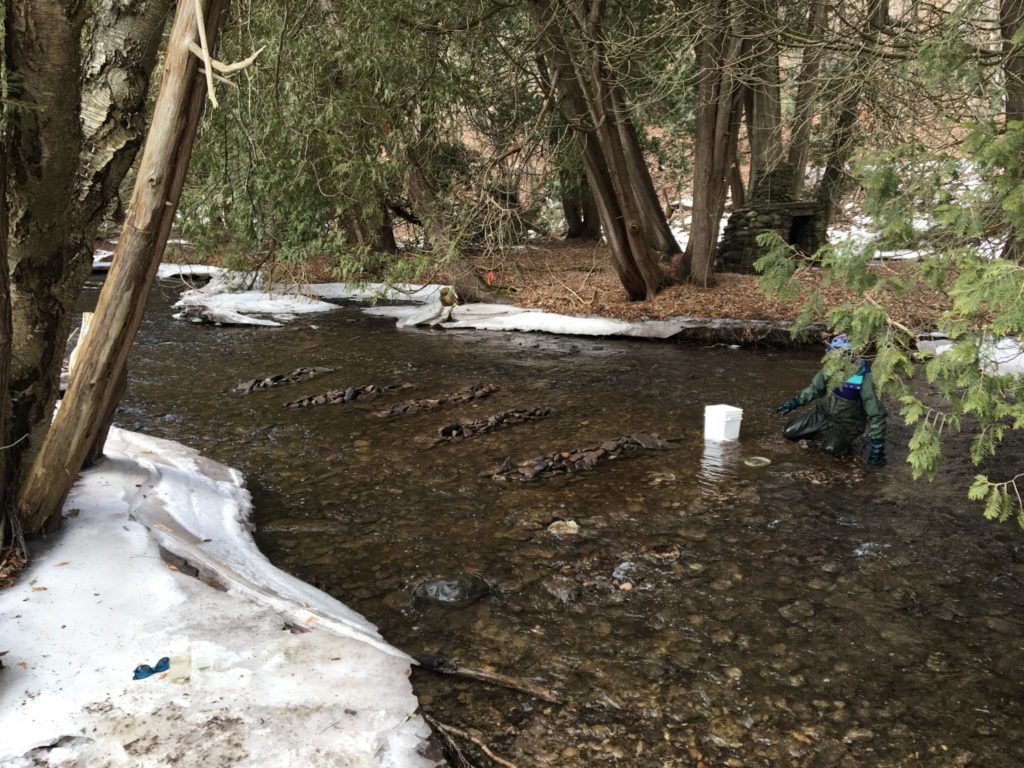
“The best things in life are free”
Volunteering for Ontario Streams was a remarkable experience and the opportunity to meet some truly amazing people. Getting involved in the community and volunteering also helped students learn new skills, discover new opportunities and connect with like-minded people. Ontario Streams has been working hard to protect our freshwater ecosystems through engaging communities and empowering volunteers to make a difference. Thank you, for including us!
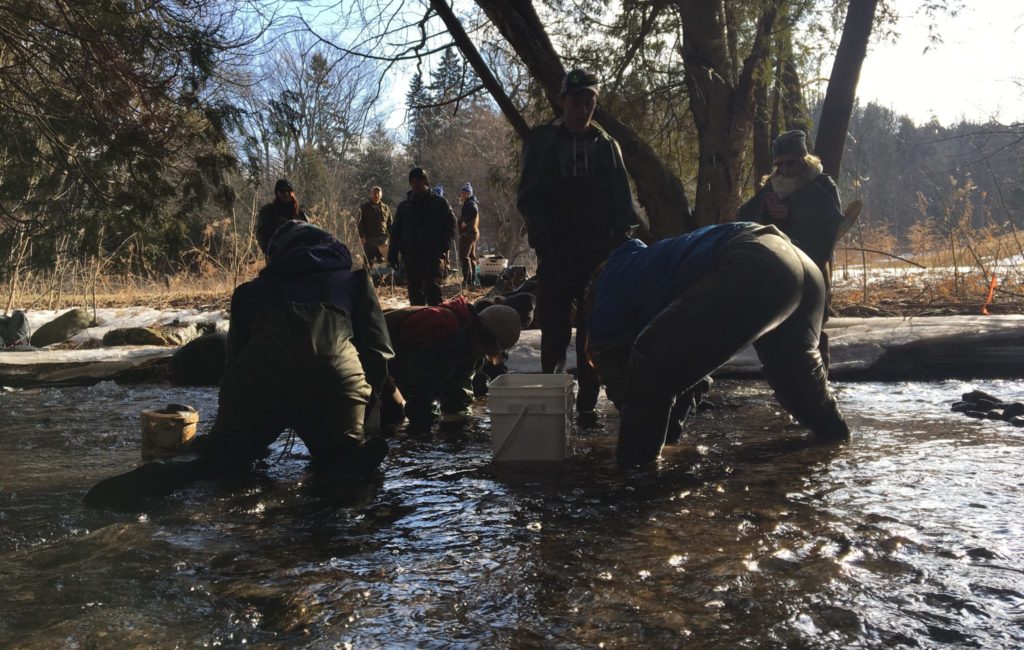
About the program
Ontario Streams, established in 1995, has been working hard to restore Atlantic salmon populations in Lake Ontario. To date, they have minimized the effects of nearly 50 stream barriers that restrict the natural migration of freshwater salmons. Some of the ways they help salmon include installing fish ladders, natural buffers and spawning beds.
At one time the salmon were so abundant in Lake Ontario, early settlers were able to just scoop them out with wooden barrel. It is hard to believe Atlantic salmon was one of the first fish species in the Great Lakes to disappear as a result of human activity. “Bring Back Atlantic Salmon” is one of the many environmental campaigns to help restore and maintain salmon populations in Lake Ontario.
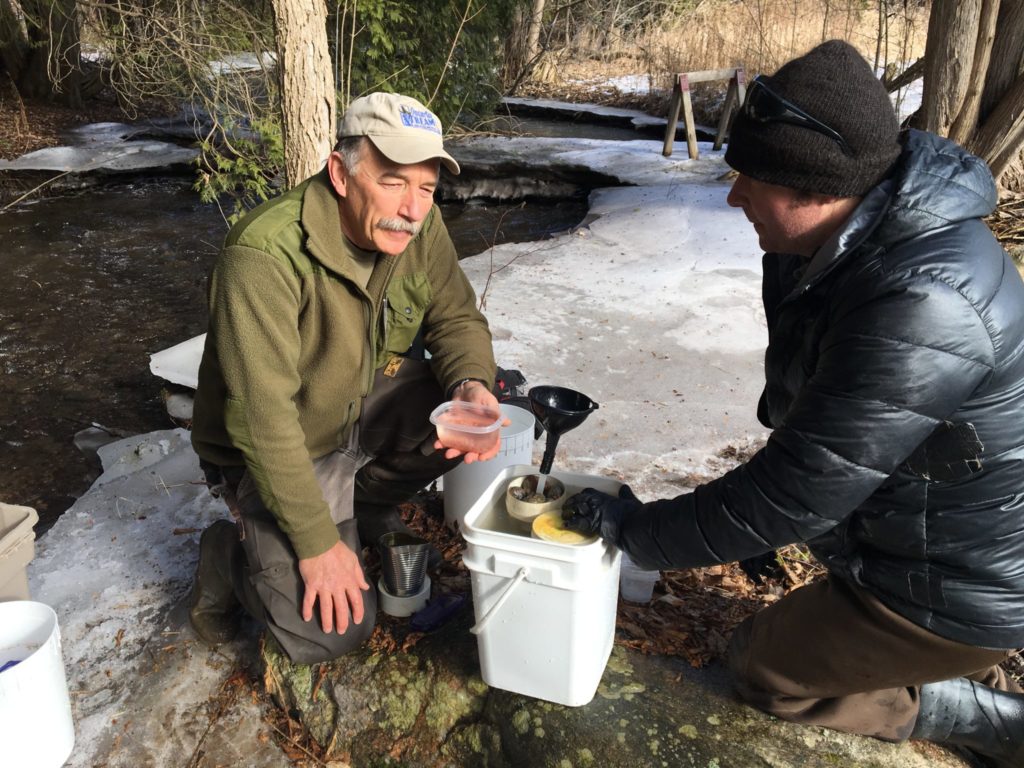
Why not Adopt-a-Stream?
Ontario Streams organize many other projects in and around the Greater Toronto Area, such as their Adopt-a-Stream program. This program encourages groups become involved in community stewardship by adopting a section of stream or wetland and developing small scale restoration projects through community involvement. Citizen science is a great way to volunteer for projects that reinforcement conservation and restoration efforts for organizations such as Ontario Streams.

Volunteers are a crucial component to the ongoing success of projects like “Bring Back the Salmon”. These programs require a great deal of planning and ongoing management to ensure success. As a volunteer, giving back to the community is incredibly rewarding. It’s part of the reason I love being a volunteer. Volunteers contribute their efforts, share their resources and time to help build strong communities.
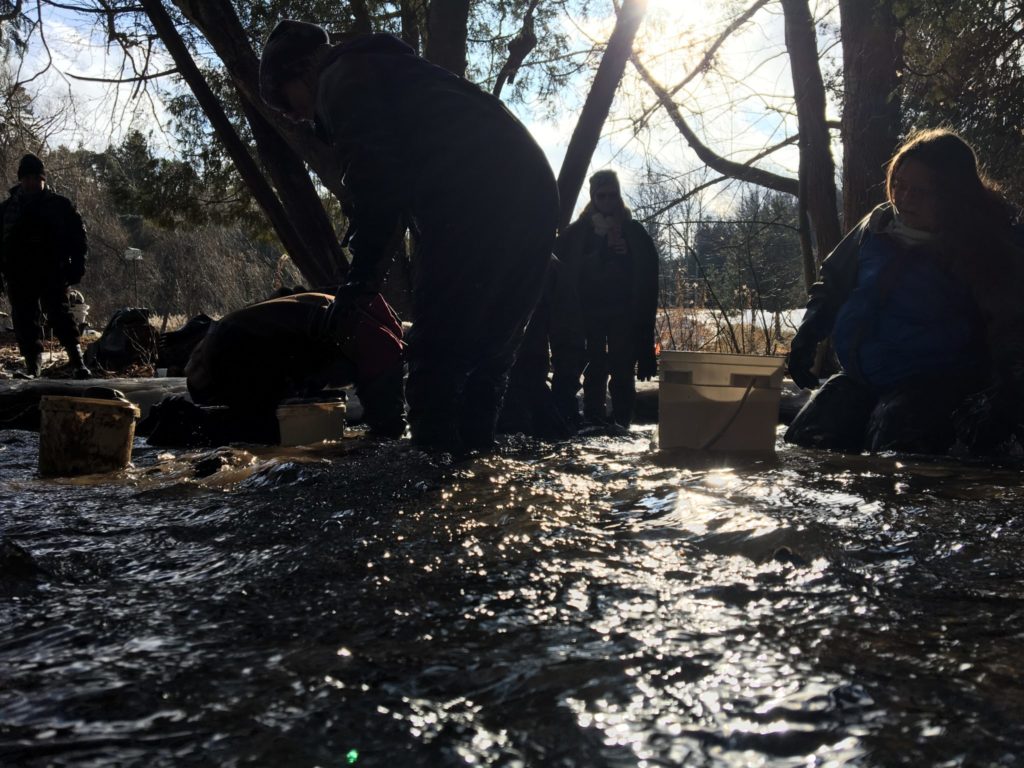
Water testing!
Citizen science provides average people the opportunity to get involved in real scientific research and projects in their communities. Of course, we took a water quality test using our citizen science testkit while we were there!
Curious about water quality in the Humber River? You can check it out my observation here: https://app.waterrangers.ca/observations/32243

Want to get involved?
Here are some links to help get you started.
- Ontario Streams: http://www.ontariostreams.on.ca/Volunteer-Employment.html
- Ontario Federation of Anglers and Hunters: https://www.ofah.org/programs/lake-ontario-atlantic-salmon-restoration-program/
- Credit Valley Conservation: https://cvc.ca/learn-and-get-involved/volunteer/
- Mississippi Valley Conservation Authority: http://mvc.on.ca/watershed-watch-monitoring/
- Rideau Valley Conservation Authority: https://www.rvca.ca/volunteer
Want to know more about Water Rangers and how you can get involved in Citizen Science?
Check out our blog “Why Citizen Science”: https://www.waterrangers.ca/en/why-citizen-science/
Jennifer Valentine, grew up on the shores of Wasaga Beach and has a special connection to water. She is an Environmental Technician, hobby botanist, and spends a lot of her free time searching for aquatic organisms (benthic invertebrates) Jennifer is passionate about educating individuals about water quality. Jennifer started in the industry as a citizen science volunteer for Water Rangers, and has been a great facilitator encouraging others to get involved in community events.
